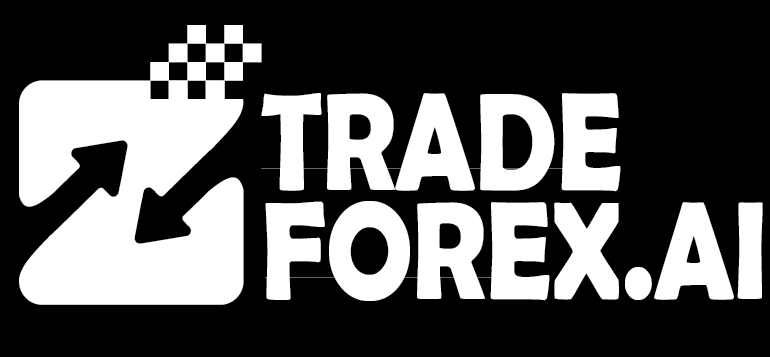In today’s fast-moving financial markets, traders are constantly bombarded with new opportunities—ranging from complex derivatives and leveraged products to fast-evolving cryptocurrencies and global stocks. With so many options, it’s easy to get overwhelmed. But despite the noise, one method remains the foundation of trading across all asset classes: spot trading.
Spot trading is the most straightforward way to participate in the market. It involves buying or selling an asset for immediate delivery at the current market price. There are no hidden contracts, no complicated settlement terms, and no future obligations—just a clear, transparent exchange. This simplicity is why the spot market continues to attract both beginners looking for clarity and seasoned traders who value direct ownership and real-time execution.
As we move through 2025, spot trading has become more accessible than ever. With advanced trading platforms, instant price feeds, and user-friendly mobile apps, anyone can start trading directly in forex, crypto, stocks, or commodities with just a few clicks. Many traders are realising that consistent success doesn’t always come from high-risk leverage or complex strategies. Instead, it begins with mastering the basics—understanding how spot trading works, why liquidity matters, and how to time entries for maximum profit.
If you want to cut through the complexity and discover how the spot market in 2025 can help you trade smarter, this guide is your starting point. We’ll explore what makes spot trading powerful, why it remains relevant across every market, and the proven steps you can take to profit in today’s fast-changing financial landscape.
What Is Spot Trading? A Clear Explanation
Spot trading is the straightforward act of buying or selling an asset for immediate settlement at the current market price. Unlike other types of trading that involve future delivery or contracts, spot trading happens right now. You make your move, and you instantly see the results.
If you want to buy one Bitcoin, 100 shares of a company, or a set amount of gold, you simply pay the current price and receive your asset. The transaction completes almost instantly, giving you true ownership and complete flexibility. This is called immediate settlement trading, and it has become the preferred method for millions of market participants around the globe.
In spot trading, prices update constantly as buyers and sellers interact in real time. There are no hidden clauses or future obligations. You see a price you like, make the purchase, and the asset becomes yours without delay.
How Does the Spot Market Function in 2025?
The spot market is the arena where assets change hands for immediate delivery. This marketplace is vast, covering everything from major currency pairs and stocks to oil and digital assets. Technology has pushed the spot market into a 24/7 global phenomenon for many assets. In the case of cryptocurrencies and forex, trading is virtually nonstop, while stock markets maintain specific hours based on the exchange.
Spot markets are designed for instant transactions. When you enter a buy or sell order, your trade is matched with another participant on the opposite side. If you want to buy, your order will match with a seller’s listing at the market price. When a match occurs, the trade is executed and settled immediately.
Let’s say you log in to your trading platform and decide to buy shares of a tech company. You enter your order, the system checks for a seller at your desired price, and the trade happens. Instantly, you are the owner of those shares, and the seller receives payment.
Immediate settlement trading means the transaction is final—there is no waiting, no rolling contracts, and no second-guessing. You always know the status of your investment. For many, this buy-and-sell-at-market-price approach is what keeps spot trading attractive and efficient.
Why Spot Trading Is the Preferred Choice for Modern Traders
Simplicity is one of the biggest reasons people love spot trading. There are no complex agreements or legal jargon to navigate. What you see is what you get: transparent pricing, direct ownership, and instant results. Whether you are new to trading or have years of experience, spot trading provides a low-stress, user-friendly entry point to the financial markets.
Another advantage is risk control. In spot trading, you typically only risk the money you put into the trade. There is no leverage or borrowing for most spot transactions, so you don’t face the same dangers as in futures or margin trading. Your exposure is clear, and losses are limited to your initial investment.
Direct ownership also sets spot trading apart. When you buy gold or a cryptocurrency, it becomes your property. If you buy shares of a company, you receive the rights and potential dividends associated with those shares. When you are ready to exit, you simply sell at the prevailing market price.
In today’s fast-paced markets, the appeal of buy-and-sell-at-market-price transactions is clear. You can react quickly to news, trends, or changing circumstances, knowing your trades will be completed instantly and with total transparency.
Comparing Spot Trading with Futures, Options, and Other Trading Types
Spot trading is just one method of trading assets, but it remains the simplest and most accessible. Futures and options contracts, for instance, involve agreements to buy or sell an asset at a set date and price in the future. This adds layers of complexity, including margin requirements, potential delivery obligations, and higher risk if the market moves against your position.
Spot trading is different. There are no expiration dates, no daily settlement adjustments, and no risk of being forced to close a position at a loss due to margin calls. When you make a trade, you control the timing, the size, and the price. If you are happy with your gains, you sell and take your profit. If the market moves against you, your loss is limited to the amount you chose to invest.
In 2025, the spot market’s simplicity and speed make it a clear favourite for both active traders and those seeking a straightforward approach to building wealth.
The Full Step-by-Step Guide: How to Profit from Spot Trading in 2025
Step 1: Select Your Asset
Choosing the right asset to trade is the foundation of every successful spot trading journey. The spot market offers a vast range of choices, including
- Currency pairs in the forex market, such as EURUSD or USDJPY
- Popular cryptocurrencies like Bitcoin, Ethereum, and Solana
- Shares of leading global companies listed on stock exchanges
- Precious metals and commodities, including gold, silver, oil, and more
Start by focusing on assets you understand. Research recent trends, market news, and volatility before you enter your first trade.
Step 2: Find a Trusted Trading Platform
Your choice of trading platform can make or break your spot trading experience. Reliable platforms should provide a secure, user-friendly environment, clear access to the spot market, and buy-and-sell-at-market-price functionality. Make sure your chosen broker or exchange is well-regulated and has a strong reputation for customer service.
A good trading platform will also offer detailed charts, real-time data, and risk management tools. Fast deposits and withdrawals are another important consideration.
Step 3: Deposit Funds and Prepare to Trade
After creating your account, fund it with your chosen payment method. Most platforms accept bank transfers, credit or debit cards, and even cryptocurrency deposits. Ensure your account verification is complete so you can access immediate settlement trading with no holdups.
Decide how much capital you want to allocate for trading. Always use funds you can afford to lose, especially when starting out.
Step 4: Analyse the Market
No one profits consistently from spot trading without solid analysis. Begin with technical analysis by studying price charts, trends, and indicators such as moving averages, RSI, or MACD. These tools help identify when an asset is likely to move higher or lower.
Combine technical analysis with fundamental analysis—watch economic calendars, company earnings, and important global news that might affect the spot market. For instance, if you’re trading oil, monitor reports about global supply and demand. If you’re trading a tech stock, look at the company’s product launches or regulatory news.
In 2025, many platforms offer AI-powered tools that sift through data and highlight trading opportunities. Take advantage of these features to make smarter decisions.
Step 5: Place Your Spot Trade
When your research suggests a good opportunity, it’s time to act. Enter a buy order if you believe the asset’s price will rise, or a sell order if you think it will fall. Your order will execute instantly at the best available market price.
Suppose you decide to buy Ethereum at $3,000. Your trading platform will match your order with a seller at that price. The trade executes, and Ethereum appears in your account.
Step 6: Monitor and Manage Your Position
Once your trade is open, monitor the market closely. Spot trading requires attention, especially in volatile environments. Use stop-loss orders to limit your downside if the market moves against you. Set take-profit orders so your gains are secured automatically if the price hits your target.
Imagine you buy gold at $2,400 per ounce. If you expect the price to climb but want to limit your risk, you place a stop-loss order at $2,350. If the price drops, your loss is capped at $50 per ounce.
Managing your position means staying aware of news, trends, and any sudden changes. Markets can react quickly to geopolitical events, earnings reports, or government decisions. The advantage of immediate settlement trading is you can exit your position whenever you choose, with no restrictions.
Step 7: Closing Your Trade and Realising Profit
Profiting from spot trading comes down to timing your exit. When the asset reaches your desired target, close your trade. Your gain is calculated as the difference between your entry and exit price, multiplied by your position size.
Suppose you bought Bitcoin at $55,000. When the price reaches $58,500, you decide to sell. With a one-Bitcoin trade, your profit is $3,500. The buy and sell at market price process means your profit is credited instantly.
Practical Examples: Spot Trading in Action
Let’s look at several real-world examples to make the concept even clearer.
If you’re trading forex and buy EURUSD at 1.1000, and the price rises to 1.1050, you sell to realise a 50-pip gain. With a $10,000 position, that’s a $50 profit.
For a stock example, imagine you buy 200 shares of a tech company at $20 each. After strong earnings, the price jumps to $24. Selling your shares nets an $4 profit per share, or $800 total.
In the crypto market, you buy Solana at $80 per token. Later, the price jumps to $100. Selling your Solana tokens brings a $20 profit per coin.
These scenarios show the power of immediate settlement trading and how quickly you can benefit from price moves.
Spot Trading Strategies That Deliver Results
A trader with a plan is always ahead of those who trade based on emotion or rumour. Consider these well-known strategies that many spot traders use:
Trend Following:
Spot trading often rewards those who trade with the prevailing trend. If a currency pair is showing a strong upward move, entering on minor pullbacks lets you capture profits as the trend continues.
Range Trading:
Some assets move between well-defined support and resistance levels. Buying near the bottom of the range and selling near the top can result in consistent gains. This is especially common in commodities and forex markets.
News-Based Trading:
Spot traders frequently capitalise on major news events. Central bank announcements, economic reports, or company earnings can cause sudden price swings. Being prepared and reacting quickly allows traders to seize short-term opportunities.
Arbitrage:
In global spot markets, price differences occasionally appear across platforms or regions. By buying an asset at a lower price in one place and selling it at a higher price in another, traders can lock in risk-free profits.
Why Risk Management Is Vital for Spot Trading
No strategy is complete without risk management. The volatility of spot markets means profits and losses can come quickly. Using stop-loss orders is crucial for protecting your capital. Never risk more than a small portion of your total trading funds on a single trade.
Diversification also matters. Trading only one asset or market can expose you to sudden losses if that market turns against you. Spreading your capital across different assets helps smooth out your performance and lowers your risk.
Keeping a trading journal is an often-overlooked tool. Recording your trades, the reasons behind them, and the outcome will help you learn from both wins and losses. Over time, you’ll recognise patterns in your behaviour and improve your discipline.
Spot Trading in 2025: Technology, Trends, and Opportunities
The spot market has evolved rapidly over the past few years. In 2025, real-time data feeds, mobile trading apps, and social trading platforms make it easier for anyone to access immediate settlement trading. The barriers to entry are lower than ever, with intuitive interfaces and robust customer support guiding new traders through every step.
AI and machine learning tools are increasingly common, helping traders analyse vast amounts of data and spot patterns no human could see alone. These advances are not just for big institutions. Individual traders can now use powerful analytics, news alerts, and predictive algorithms to enhance their spot trading strategies.
Globalisation has also played a role. Traders can access spot markets in different time zones, capitalise on events around the world, and react to news in seconds. Whether it’s an overnight policy change in Asia or a sudden shift in US stocks, you’re always just a click away from entering or exiting a trade.
Common Mistakes and How to Avoid Them
Spot trading is simple, but that does not mean mistakes are rare. Many new traders get caught up in the excitement and start placing trades without a plan. Others chase losses, believing they can recover quickly by doubling down. Emotional trading almost always leads to disappointment.
Another common pitfall is ignoring fees. Even in the spot market, small fees can add up if you trade frequently. Always review the fee schedule on your platform and factor it into your profit calculations.
Overconfidence can also trip up traders. Just because a trade worked once does not mean it will always work again. Stick to your strategies, review your performance regularly, and adjust your approach as you gain experience.
Key Takeaways for Profitable Spot Trading
Success in spot trading comes from a combination of knowledge, discipline, and adaptability. Learn how the spot market works, use analysis to guide your decisions, and never underestimate the importance of risk management. Stay humble and always be willing to learn from your mistakes.
The best traders treat each trade as a learning opportunity. By focusing on process over quick wins, you build a strong foundation for consistent profits.
The Future of Spot Trading: What Lies Ahead
Looking ahead, spot trading will likely continue to grow in popularity as technology makes markets faster, more efficient, and more accessible. Innovations like instant settlements, decentralised exchanges, and AI-powered analytics will give traders even more control.
As more assets become digitised and global markets remain interconnected, spot traders will have more choices and greater opportunities than ever before. If you keep learning, stay disciplined, and adapt to new tools, the future of spot trading is bright.
Conclusion: Start Strong with Spot Trading in 2025
Spot trading offers a unique blend of simplicity, transparency, and opportunity. By focusing on immediate settlement trading, you can act quickly, own your assets directly, and avoid many of the risks that come with more complex financial products. Whether you are interested in currencies, crypto, stocks, or commodities, the spot market gives you the tools to profit from price moves in real time.
To make the most of your spot trading journey, choose assets wisely, analyse the markets with care, and manage risk at every step. Embrace technology, stay disciplined, and always be ready to learn from the markets. Spot trading is open to everyone, and 2025 is the perfect time to get started.
Your trading journey is yours to shape. Take the first step, keep learning, and discover why spot trading remains the top choice for new and experienced traders worldwide.
Read here to learn more about “What Moves Price Action? Top Factors Influencing Your Trades“.

I’m Chaitali Sethi — a seasoned financial writer and strategist specializing in Forex trading, market behavior, and trader psychology. With a deep understanding of global markets and economic trends, I simplify complex financial concepts into clear, actionable insights that empower traders at every level. Whether it’s dissecting winning strategies, breaking down market sentiment, or helping traders build the right mindset, my content bridges the gap between information and implementation.




